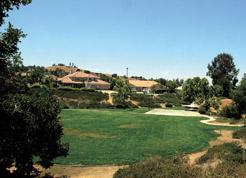
Fees charged to residential builders raised for the first time
in 20 years
For the first time in 20 years, the City of Hollister has
increased the fees it charges builders to help fund parks projects
in the city.
Fees charged to residential builders raised for the first time in 20 years
For the first time in 20 years, the City of Hollister has increased the fees it charges builders to help fund parks projects in the city.
The City Council this week voted to raise the existing park development fee for new developments from $1,123 per parcel to a two-tiered fee totaling $4,37 – $2,133 for park land acquisition and $2,244 for park construction.
“The idea behind impact fees – whether they are for parks or police or fire services – it to maintain a certain level of service,” said William Avera, Hollister’s development services director.
The city’s General Plan sets a goal of having four acres of parks and recreation facilities per 1,000 residents. Officials say the amount of existing neighborhood and community park land and open space sits at 4.34 acres per 1,000 city residents.
The newly-increased park impact fees are designed to maintain that ratio while setting aside money for more parks.
“It’s basically for expanded facilities and not necessarily for the maintenance of current facilities,” Avera said. “Our city has an adopted parks master plan, so you want to create and develop parks that are part of that plan.”
The City Council held a public hearing on June 1 to discuss the proposed increase in park impact fees and Avera sent a copy of an analyst’s report to the Homebuilders’ Association of Northern California. He said he did not receive comments from developers about the fee increase.
“No matter what developer you are, you are concerned with impact fees,” Avera said. “However, park fees are the one impact fee that, unless it’s outrageous, they can deal with. It’s a lot easier for them to sell a home when someone comes to a community and there are nice parks.”
Acknowledging that some people believe that impact fees may discourage development, Avera said that while the higher fee may eat into a builder’s profit margin, those fees are considered a part of doing business.
Hollister has a number of smaller parks, such as Klauer Park in the Anderson Homes subdivision north of Sunnyslope and west of Fairview roads and the Southeast Area Park in the Valleyview Estates subdivision, for which developers set aside land.
“The city doesn’t need a lot of 7,000-square-foot parks,” Avera said. “They’re kind of nice for families and break up a development [with green space], but they are a maintenance nightmare.”
Having a mix of small neighborhood parks and larger community facilities would be ideal, he noted.
The impact fees charged to developments of 50 or more parcels will be discussed at a public hearing scheduled during the July 6 City Council meeting. The city and developers can negotiate the donation of a park in lieu of the impact fees – or a combination of both – but that is done on a case-by-case basis.
Developments under 50 parcels are only required to pay fees, not set aside park land. Apartment or condo developments that have more than 50 dwelling units may be required to set aside a portion of their property for park land, according to a city ordinance.
Park impact fees may be used only for acquiring park land and developing new or rehabilitating existing neighborhood or community parks or recreational facilities.
Newly-built apartments or condominiums will pay a per-unit park impact fee of $4,291 under the city’s new rules.








